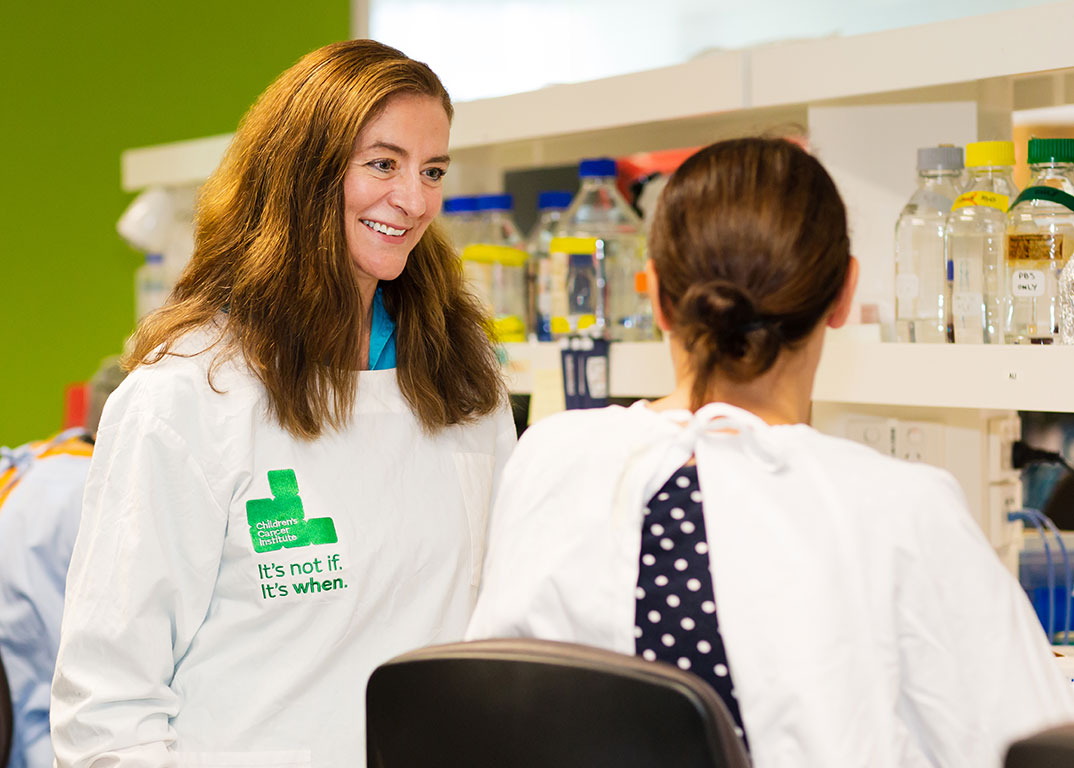Almost all children with acute lymphoblastic leukaemia initially respond well to treatment and go into remission. But about one in six children later relapse. This happens when chemotherapy is not successful in eliminating all the leukaemia cells from a child’s body. These surviving cells (called ‘minimal residual disease’, or MRD) lead to the disease coming back, this time with resistance to treatment drugs.

Our MRD test
Professor Murray Norris AM and his team at Children’s Cancer Institute worked for several years to develop a way of detecting and measuring MRD on a molecular level – a much more sensitive and effective way of finding cancer cells than looking down a microscope.
The technique Professor Norris and his team developed involves identifying unique genetic markers for each child’s leukaemia, and then measuring these markers in a sample of that child’s bone marrow at different stages of treatment.
How good is it?
To test the usefulness of our MRD-detection technique, a clinical trial ran in children with acute lymphoblastic leukaemia from 2002 to 2011 in six children’s hospitals. During the trial, scientists at our Institute carried out MRD testing on bone marrow samples from all participating children. Those children who the testing showed to be at high risk of relapse were given more intensive treatment by their treating doctors.


The results of the trial showed that using our MRD test in this way significantly improved survival in these children. In fact, the cure rate doubled, moving from 35% up to 70%."
- Professor Murray Norris AM

MRD testing today
Today, treatment decisions for all children newly diagnosed with acute lymphoblastic leukaemia, and those who relapse, are based on MRD testing.
Every year, scientists at our Institute do about 500 MRD tests on children and adolescents with acute lymphoblastic leukaemia. Over time, we’ve refined our technique, and it is now possible to use the test to predict whether standard treatment is likely to cure a child as early as two weeks into treatment. We will continue to refine the test to further improve our ability to predict relapse risk.
Harper's story
Harper was not even two years old when a shock diagnosis of acute lymphoblastic leukaemia meant she would end up spending the next year, a third of her short life time, in hospital undergoing gruelling treatment.
News & updates

Research suggests promising new treatment for neuroblastoma

Michelle Haber discusses the 42 years she has dedicated to c...

Australian research paves way for new cancer therapy










